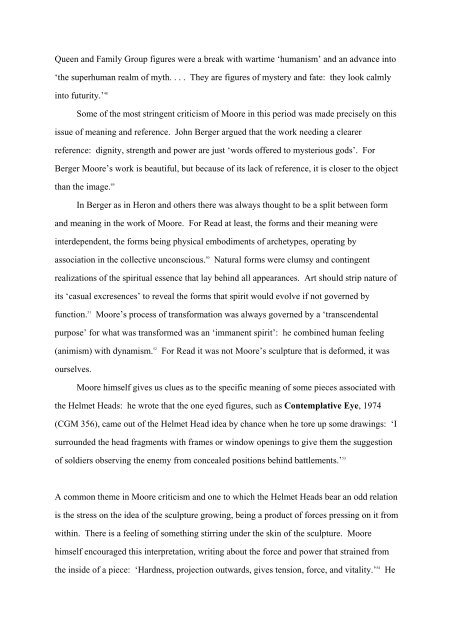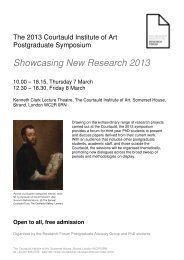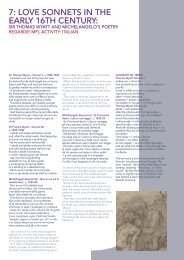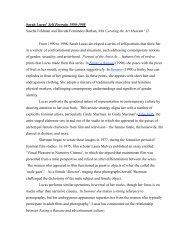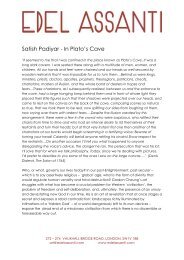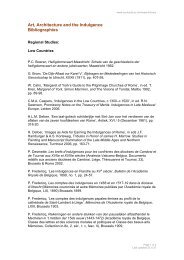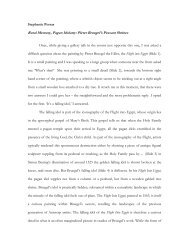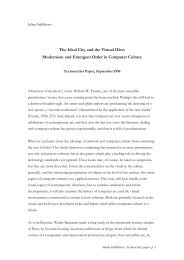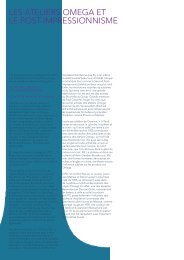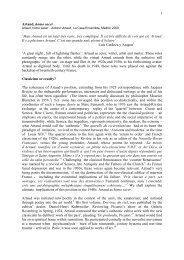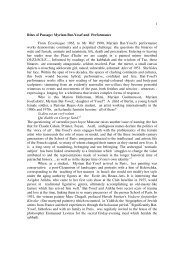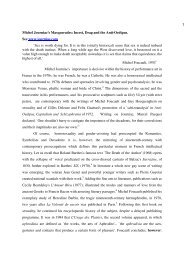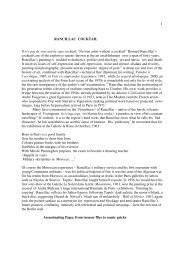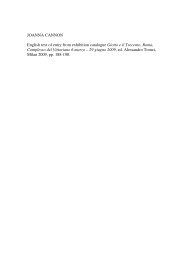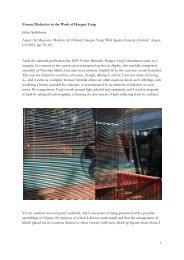Iluna gordelekuan/ Oscuridad en el refugio - The Courtauld Institute ...
Iluna gordelekuan/ Oscuridad en el refugio - The Courtauld Institute ...
Iluna gordelekuan/ Oscuridad en el refugio - The Courtauld Institute ...
Create successful ePaper yourself
Turn your PDF publications into a flip-book with our unique Google optimized e-Paper software.
Que<strong>en</strong> and Family Group figures were a break with wartime ‘humanism’ and an advance into<br />
‘the superhuman realm of myth. . . . <strong>The</strong>y are figures of mystery and fate: they look calmly<br />
into futurity.’ 48<br />
Some of the most string<strong>en</strong>t criticism of Moore in this period was made precis<strong>el</strong>y on this<br />
issue of meaning and refer<strong>en</strong>ce. John Berger argued that the work needing a clearer<br />
refer<strong>en</strong>ce: dignity, str<strong>en</strong>gth and power are just ‘words offered to mysterious gods’. For<br />
Berger Moore’s work is beautiful, but because of its lack of refer<strong>en</strong>ce, it is closer to the object<br />
than the image. 49<br />
In Berger as in Heron and others there was always thought to be a split betwe<strong>en</strong> form<br />
and meaning in the work of Moore. For Read at least, the forms and their meaning were<br />
interdep<strong>en</strong>d<strong>en</strong>t, the forms being physical embodim<strong>en</strong>ts of archetypes, operating by<br />
association in the collective unconscious. 50<br />
Natural forms were clumsy and conting<strong>en</strong>t<br />
realizations of the spiritual ess<strong>en</strong>ce that lay behind all appearances. Art should strip nature of<br />
its ‘casual excres<strong>en</strong>ces’ to reveal the forms that spirit would evolve if not governed by<br />
function. 51<br />
Moore’s process of transformation was always governed by a ‘transc<strong>en</strong>d<strong>en</strong>tal<br />
purpose’ for what was transformed was an ‘imman<strong>en</strong>t spirit’: he combined human fe<strong>el</strong>ing<br />
(animism) with dynamism. 52<br />
For Read it was not Moore’s sculpture that is deformed, it was<br />
ours<strong>el</strong>ves.<br />
Moore hims<strong>el</strong>f gives us clues as to the specific meaning of some pieces associated with<br />
the H<strong>el</strong>met Heads: he wrote that the one eyed figures, such as Contemplative Eye, 1974<br />
(CGM 356), came out of the H<strong>el</strong>met Head idea by chance wh<strong>en</strong> he tore up some drawings: ‘I<br />
surrounded the head fragm<strong>en</strong>ts with frames or window op<strong>en</strong>ings to give them the suggestion<br />
of soldiers observing the <strong>en</strong>emy from concealed positions behind battlem<strong>en</strong>ts.’ 53<br />
A common theme in Moore criticism and one to which the H<strong>el</strong>met Heads bear an odd r<strong>el</strong>ation<br />
is the stress on the idea of the sculpture growing, being a product of forces pressing on it from<br />
within. <strong>The</strong>re is a fe<strong>el</strong>ing of something stirring under the skin of the sculpture. Moore<br />
hims<strong>el</strong>f <strong>en</strong>couraged this interpretation, writing about the force and power that strained from<br />
the inside of a piece: ‘Hardness, projection outwards, gives t<strong>en</strong>sion, force, and vitality.’ 54<br />
He


